#braga circuit
Explore tagged Tumblr posts
Text
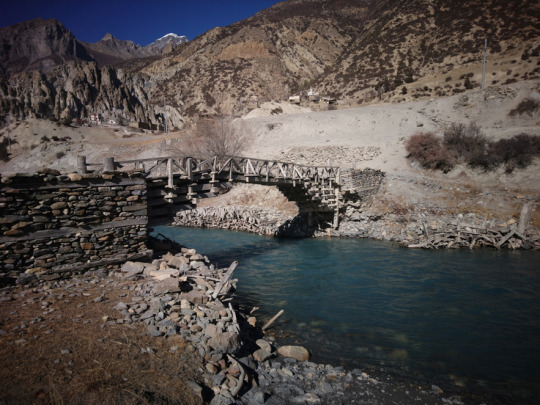
11 notes
·
View notes
Text
Manang Motorbike Tour: Conquer Rugged Trails in Nepal’s Heartland

Nepal is best known for its towering peaks and legendary trekking routes. But for those with a passion for two wheels and the spirit of adventure, there's another way to explore the raw beauty of this Himalayan nation—through a motorbike tour. One of the most thrilling and scenic rides you can take is the Manang Motorbike Tour. This ride takes you deep into the Annapurna region, offering a blend of rugged trails, stunning landscapes, and authentic mountain culture.
In this blog, we’ll guide you through what makes the Manang motorbike tour so special, what you can expect, and how to prepare for this unforgettable journey. Whether you’re new to adventure motorbiking or planning your first high-altitude tour, this post has you covered.
Why Choose a Manang Motorbike Tour?
1. A Unique Himalayan Experience
Unlike other popular biking destinations that stick to paved roads and touristy spots, the Manang route takes you into the heart of the Himalayas. You’ll ride through remote villages, cross rivers, and climb steep gravel paths. The tour blends adventure with cultural immersion, giving you a close-up view of local life in the Annapurna region.
2. Unbeatable Scenery
From lush valleys to alpine forests and dramatic cliffs, the route to Manang offers a constantly changing landscape. One moment you’re riding along the Marsyangdi River, and the next, you're ascending towards the snow-capped peaks of Annapurna II and Gangapurna. The scenery here isn’t just beautiful—it’s breathtaking.
3. A True Off-Road Challenge
If you enjoy riding on challenging terrain, the Manang trail is perfect. The roads are mostly unpaved and rocky, testing both your riding skills and your endurance. But don’t worry—this isn’t about speed. It’s about taking your time and soaking in the adventure.
Where Is Manang?
Manang is a high-altitude town located at around 3,500 meters (11,500 feet) above sea level, nestled in the Manang District of Nepal. It’s a key stop on the popular Annapurna Circuit trekking route and lies within the Annapurna Conservation Area.
Though isolated, Manang is accessible by a rough road that winds its way from the lowland towns of Besisahar and Chame. In recent years, the road has been improved in sections, allowing experienced motorcyclists to reach this once-inaccessible area.
Best Time to Do the Manang Motorbike Tour
The best months to ride to Manang are March to May and September to November. These months offer the most stable weather, clear skies, and comfortable temperatures. During the monsoon season (June to August), the trails become slippery and dangerous due to rain. In winter (December to February), snowfall can block roads and make the ride treacherous.
What to Expect on the Road
1. Road Conditions
The ride to Manang is mostly off-road. Expect rocky trails, steep climbs, river crossings, and occasional landslides. The road becomes rougher as you ascend, especially after Chame. While the ride is tough, it's not impossible. With the right bike and preparation, even beginners with a bit of confidence can enjoy the journey.
2. Altitude Challenges
As you gain elevation, you may begin to feel the effects of altitude. Symptoms like shortness of breath, headaches, or fatigue can occur. It’s important to take your time, stay hydrated, and allow your body to adjust. Acclimatization stops are not just helpful—they're necessary.
3. Local Culture and Villages
One of the best parts of this trip is meeting the locals. Along the way, you’ll pass through charming villages like Pisang and Braga, each with its own unique culture and traditions. You’ll see Buddhist monasteries, prayer flags fluttering in the wind, and experience the warm hospitality of mountain communities.
Preparing for Your Manang Motorbike Tour
1. Choose the Right Bike
For this tour, a dirt bike or dual-sport motorbike is ideal. Bikes like the Royal Enfield Himalayan, Honda CRF 250, or similar adventure models work well on uneven terrain. Make sure your bike is in top condition, especially the tires, brakes, and suspension.
2. Gear Up Properly
Safety and comfort are key. Here’s a quick checklist of essential gear:
Helmet (full-face recommended)
Riding jacket and pants (preferably waterproof and armored)
Gloves (with good grip and protection)
Boots (sturdy, ankle-high, and waterproof)
Rain gear (you never know when the weather might change)
Thermal layers (it gets cold at higher altitudes)
Sunglasses or goggles (for dust and sun protection)
3. Pack Smart
You’ll need to carry only the essentials. Most villages have basic lodges and food, so there's no need to overpack. A small backpack or saddlebags with water, snacks, a first aid kit, and spare parts like inner tubes and cables should do the trick.
Tips for a Safe and Enjoyable Ride
1. Ride Slow, Ride Safe
Speeding on mountain roads is risky. The terrain is unpredictable, and you never know what’s around the next bend. Take your time, enjoy the views, and focus on control rather than speed.
2. Acclimatize
Don't rush the climb. Spend a night or two at mid-altitude stops like Pisang or Chame. This helps your body adjust to the thinner air and reduces the risk of altitude sickness.
3. Check the Weather
Weather can change rapidly in the mountains. Always check the forecast before heading out each day and be prepared to stop if the weather turns bad.
4. Stay Connected (When You Can)
Cell service is available in some areas, but not everywhere. It’s a good idea to carry a local SIM card with data or consider renting a satellite phone if you’re traveling solo or in small groups.
Responsible Riding in the Mountains
Tourism is a growing source of income for Himalayan communities, and motorbike tours are part of that. But with adventure comes responsibility. Here’s how you can travel respectfully:
Stick to established roads and trails
Don’t rev your engine in villages—keep noise to a minimum
Carry your trash out with you
Support local businesses by eating and staying in locally-owned lodges
Greet locals with respect (a simple “Namaste” goes a long way)
Why the Manang Motorbike Tour is Worth It
If you're looking for an adventure that goes beyond the ordinary, the Manang Motorbike Tour delivers. It’s not just about reaching a destination—it’s about the journey. Every turn in the trail offers a new view, a new challenge, and a new memory. The sense of freedom, the adrenaline of riding in the wild, and the peaceful moments in remote villages combine to create an experience like no other.
This tour gives you a chance to explore a side of Nepal that few tourists see. It's raw, real, and rewarding. Whether you're riding solo, with friends, or as part of a guided group, the Manang route will leave a mark on your soul—and likely a bit of mud on your boots.
Final Thoughts
The Manang Motorbike Tour is perfect for those who want more than just a vacation. It’s for those who crave connection—with nature, with culture, and with themselves. The road may be rough, the air thin, and the ride demanding, but the rewards? They’re unforgettable.
So, if you're ready to conquer rugged trails and experience the true heart of Nepal, start planning your ride to Manang today. Adventure awaits on every curve of the mountain road.
Would you like help choosing the right bike or gear for this tour?
0 notes
Text
Ultimate Guide to the Annapurna Circuit Trek Tour

The Annapurna Circuit Trek Tour is a dream destination for adventurers, nature lovers, and trekking enthusiasts alike. This epic journey through the Annapurna mountain range offers awe-inspiring views, cultural immersion, and a sense of accomplishment unlike any other. Whether you’re a seasoned trekker or embarking on your first major adventure, this guide will equip you with everything you need to know about the Annapurna Circuit Trek Tour.
Why Choose the Annapurna Circuit Trek Tour?
The annapurna circuit trek tour is globally renowned for its diverse landscapes, from lush green valleys to arid high-altitude terrains. This trek not only offers unparalleled panoramic views of towering peaks but also takes you through charming villages, ancient monasteries, and vibrant local markets.
With varying altitudes and breathtaking scenery, the Annapurna Circuit is an adventure that will challenge you physically while rewarding you emotionally and spiritually.
Key Highlights of the Annapurna Circuit Trek
Mesmerizing Views
The trek offers spectacular views of peaks like Annapurna I, II, III, and IV, as well as Mount Dhaulagiri, Tilicho Peak, and Machhapuchhre (Fishtail Mountain).
Thrilling Passes
Crossing the Thorong La Pass, one of the world’s highest trekking passes at 5,416 meters, is a major highlight.
Cultural Richness
The Annapurna Circuit immerses you in Nepalese and Tibetan cultures, with opportunities to explore Buddhist monasteries and experience the hospitality of local communities.
Tilicho Lake
Often considered an add-on to the circuit, Tilicho Lake is one of the highest-altitude lakes in the world and offers a serene, surreal experience.
Best Time to Visit the Annapurna Circuit
Spring (March to May)
Spring is a popular time for trekking due to pleasant temperatures and blooming rhododendrons that paint the trails in vibrant colors.
Autumn (September to November)
Autumn is considered the best season for trekking, offering clear skies, stable weather, and incredible mountain views.
Avoid Monsoon and Winter
The monsoon season (June to August) brings heavy rainfall, making trails slippery and challenging. Winter (December to February) can be harsh, with heavy snowfall at higher altitudes.
Preparing for the Annapurna Circuit Trek
Physical Fitness
Building endurance and strength is crucial. Start training with cardio exercises, hiking, and strength training a few months before your trek.
Permits Required
You’ll need two permits:
TIMS (Trekkers’ Information Management System) Card
Annapurna Conservation Area Permit (ACAP)
Packing Essentials
Clothing: Layered clothing for varying temperatures.
Gear: A sturdy backpack, trekking poles, and high-quality boots.
Miscellaneous: Sunscreen, water purification tablets, and first aid supplies.
Route Overview: A Day-by-Day Breakdown
Day 1: Arrival in Kathmandu
Explore the vibrant streets of Thamel and prepare for the trek.
Day 2-3: Drive to Besi Sahar and Trek to Chame
Start your trek with scenic views of waterfalls, lush forests, and terraced fields.
Day 4-6: Trek to Manang
Pass through picturesque villages like Pisang and Braga, with acclimatization stops to adjust to higher altitudes.
Day 7-9: Thorong Phedi and Thorong La Pass
The highlight of the trek is crossing the Thorong La Pass, where stunning views await. Descend to Muktinath, a sacred site for both Hindus and Buddhists.
Day 10-13: Trek to Jomsom and Return
Explore the unique landscapes of the Mustang region before heading back to Pokhara.
Accommodation and Food on the Trek
The Annapurna Circuit offers various accommodation options, from basic teahouses to more comfortable lodges. Meals typically include dal Bhat (lentil soup with rice), momos, and other traditional Nepalese dishes.
For cost savings:
Opt for combo meals offered by teahouses.
Carry some snacks to avoid overpaying at higher altitudes.
Trekking with OrangeDMC
For a seamless and unforgettable trekking experience, consider booking your Annapurna Circuit Trek Tour with OrangeDMC. This trusted travel company specializes in Himalayan treks and offers comprehensive packages that include guides, permits, and logistics. Their experienced team ensures your safety and comfort, allowing you to focus on the adventure ahead.
For more details, visit here: https://www.orangedmc.com/annapurna-circuit-trek-tour.html
Tips for Saving Money on the Trek
Accommodation
Negotiate room rates or stay at teahouses offering free accommodation if you dine there.
Food
Stick to local meals like dal bhat, which are filling and affordable. Avoid packaged foods, as prices increase with altitude.
Transport
Take shared jeeps or buses instead of private vehicles for cost-effective travel.
Challenges to Be Aware Of
Altitude Sickness
Acclimatize properly and stay hydrated to prevent altitude sickness. Carry medications like Diamox as a precaution.
Weather Conditions
Be prepared for unpredictable weather, especially at higher altitudes.
Physical Fatigue
Ensure you’re physically fit and take regular breaks during the trek.
Conclusion
The Annapurna Circuit Trek Tour is a once-in-a-lifetime experience that combines natural beauty, cultural richness, and a sense of adventure. Whether it’s the thrill of crossing Thorong La Pass or the serenity of Tilicho Lake, every moment on this trek is unforgettable. With proper planning, preparation, and the support of a reliable company like OrangeDMC, your annapurna tour will be both safe and rewarding.
0 notes
Text
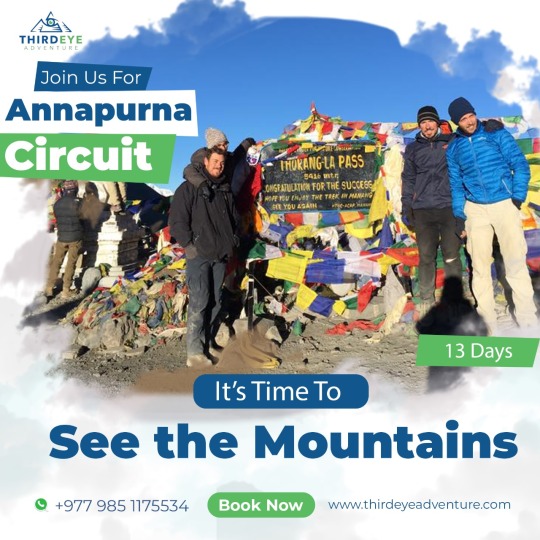
Book today with @thirdeyeadventure the popular Annapurna Circuit trek.
Trek from East to West across the rugged Himalayan trails of the Northern Annapurna Range, and visit many traditional and ancient villages such as Braga and Manang. See over 140 different peaks and mountains and cross the highest mountains pass in Nepal, the Thorang La at 5,416 meters (17,769 ft.)!
Highlights of this trip:
Rising the Marsyangdhi River valley
Get to know the mountain individuals in the core of the Himalayas
Intersection of the Thorong La Pass at 5,416 meters
The journey town of Muktinath
Strolling through the world’s most profound crevasse and the Kaligandaki valley
Shower in regular natural aquifers at Tatopani
Get a long way from the clamoring city life into the serene and immaculate nature
Remain in teahouses of little towns
Appreciate the energetic night of Pokhara
Book today via:
+977 9851175534 (WhatsApp)
0 notes
Text
Challenger 2023 Wrapped: On the Rise, On the Go
A Personal Reflection on the 2023 ATP Challenger Tour season

The ATP Challenger Tour's older logo in the net illustration (📸 Profilnet via Teniszive.cz)
Take on the challenge. Take on the world. Go for it. Go again, again, and again. Break serve. Break through. On Tour. On repeat. On the rise. (ATP Challenger Tour promotional campaign, On the Rise).
With 196 tournaments hosted in 46 countries, the 2023 ATP Challenger Tour season set another record-breaking season, mostly filled with different stories and milestones. Either a huge ranking jump thanks to their stellar results or someone making immense progress after some setbacks, all of these stories were united in this Tour, making it an even more legitimate deal as the year progressed.
Furthermore, the ATP Challenger Tour’s campaign this year is “On the Rise,” which embodied what the Challenger Tour is all about throughout the year: the constant grinding with hopes to break even to the main Tour and beyond, becoming an intersection of people who transitioned from the junior circuit, trying to hang on in hopes to break through, as well as hanging in there after some form slump somewhere in the year. However, while noting the previously mentioned increase in tournaments and prize money, realize that they are a culmination of the process these players went through, each having their own stories.
As a result, to close the year, I’ve taken a more personal approach: while acknowledging some records or milestones, I’ll reflect on what the Challenger Tour taught us during the past year. Using several notable moments to exemplify the lessons learned this season, these were how I saw the 2023 season.
1. 30 is the new 20


Arthur Weber with his Zhuhai Challenger title (left, 📸 ATP via Ski Nordique) and Oriol Roca Batalla with his Braga Challenger Title (right, 📸 Record Portugal)
While this might be applicable in the main Tour, considering the dominance of Novak Djokovic, as well as the resurgence of Grigor Dimitrov and Andy Murray as one of the notable examples, 2 maiden Challenger titles were won by people in their 30s: Arthur Weber in Zhuhai (at the age of 31, where he became the oldest maiden Challenger title winner) and Oriol Roca Batalla in Braga (at the age of 30).
Elaborating on the said examples, for A. Weber, this gave his tennis life "a go again" after deciding to restart tennis after the long pandemic hiatus, now basing himself in Ho Chi Minh City, allowing him to access the Asian circuit. He notably ground the Asian ITFs, including in Jakarta, with a remarkable rivalry against Leo Borg, winning their recent meeting 4-6, 7-5, 7-5 in the Aug 7 final. A. Weber went on to win his maiden Tour-level match in Shanghai M1000 (a Masters 1000 qualification), edging Sho Shimabukuro in 3 sets before being eliminated at the hands of Philip Sekulic.
On the other hand, Roca Batalla's latest Challenger final before Braga (and Augsburg later on) came in the Kenitra Challenger 2015, where he became the runner-up to Roberto Carballes Baena due to a retirement down 1-6, 1-5 in the second set. Despite his early exits to close this season, Roca Batalla secured his Australian Open qualification berth by ranking 213 (by the end of 2023), opening up a chance to rebuild his career as he also achieved his career-high ranking of 187 this year, out-performing his previous career high of 193, attained on August 3, 2015.
2. Everyone builds at their own pace

Alex Michelsen and Arthur Fils opened the practice sessions ahead of the NextGen ATP Finals 2023 (📸 ATP)
Not everyone can be Arthur Fils or Alex Michelsen with their rapid rise in their young age. A. Fils started the year right outside the Top 200, while A. Michelsen was the World No. 600 by the start of 2023, and they jumped plenty of places to be where they are now. The former, who was the 2021 Roland Garros Junior Boys' Doubles runner-up with Giovanni Mpetshi Perricard, commenced 2023 with a title run in the Oeiras 2 Challenger (d. Joris de Loore) and went on to win the Lyon (250) title, followed by becoming the Hamburg (500) semifinalist before ending the season by becoming the runner-up of the NextGen Finals to Hamad Medjedovic, thus fellow players voted for him to receive the Newcomer of the Year award as a cherry on top of his rise. On the other hand, A. Michelsen finished this year as the World No. 97 after becoming the runner-up to an in-form Jordan Thompson in Rome, GA (United States), where he further displayed his potential, as well as the Newport (250) (l. Adrian Mannarino) the week after he won his maiden Challenger title in Chicago. For young players like them, the only way is to embrace the process and progress, but a rollercoaster is still possible since their careers are still a long way, hopefully.

Francisco Comesana (left) and Mariano Navone (right) during the Buenos Aires 2 Challenger 2022 trophy presentation, where the former won 6-4, 6-0 (📸 El Gráfico)
Some ended up progressing together. This was the case for Francisco Comesana and Mariano Navone, who concluded their season by ranking 124 and 125, respectively. Their inseparable notion started with the deeply-rooted rivalry in the ITFs of 2021, followed by the Corrientes and Buenos Aires 2 Challenger finals in 2022, both of which were won by Comesana. It took a year and 6 meetings for Navone to depigeonize Comesana, starting the 2023 Santa Fe 1 Challenger semifinals with a 7-5, 7-5 win, followed by a comeback victory in the Santa Cruz final 4-6, 7-5, 6-1 before winning the next two meetings in the Santa Fe 2 second round and Lima 2 semifinal, with both matches ended in 3 sets. Hilariously enough (for some), Navone and Comesana also memorably finished their season with another milestone to their names: the former winning 5 Challenger titles (the most of this year) with a previous 14-match winning streak snubbed by Luciano Darderi in the Lima 2 Challenger finals, and the latter having the most wins of the season (45-21, right above Facundo Diaz Acosta, who had a remarkable streak in the clay season starting the Savannah Challenger, winning 4 titles and a gold medal in this year’s Panam Games to add to his express rise). With 5 takes out of an overall 10 in 2023, rest assured that there is a possibility to see more of Navone and Comesana's progress together, recognizing the frequency of this match that resulted in the Argentinean-Latin American community and media calling it "El Clasico" every time they met. A heads-up before we even begin the clay season: sooner or later, an elevation of this goated rivalry is possible and the world will be its witness.

Hamad Medjedovic with his NextGen ATP Finals 2023 title (📸 NextGen Finals)
Some overcame doubts raised as they rose, considering how one title or big-run wonder discourse often occurred in tennis. As an example, this happened with Hamad Medjedovic after having an underwhelming campaign in the second half of the 2022 season moments after winning his maiden Challenger title in Luedenscheid. It took the first half of the season to eventually prove the doubters wrong, by subsequently winning three Challenger titles in Szekesfehervar, Mauthausen, and Mallorca, backed them up with 2 250 semifinal runs in Kitzbuehel and Astana. To top it off, he won the 2023 NextGen Finals, defeating A. Fils in a topsy-turvy five-mini-set match. He has yet to enter the Top 100 by the end of 2023, but he has a likelihood of coming for his things in 2024. Never in doubt.


Benoit Paire won the Puerto Vallarta Challenger (top, 📸 SuperTennis Italia) and Kei Nishikori won the Palmas del Mar Challenger (bottom, 📸 The Japan Times)
Some others might have taken ages to rebuild their form, understandably. Several names came into mind, e.g. Benoit Paire, Fabio Fognini, and Kei Nishikori, as well as Max Purcell or Marcus Willis (in doubles), among others. Paire started the year ranked 179 and dropped even further to 209 as of March 6, 2023, getting the knack again after winning the Puerto Vallarta Challenger (d. Yuta Shimizu), ultimately ending his season 17 lines away from returning to the Top 100 after being the runner-up of the Maia Challenger (l. Nuno Borges). Fabio Fognini spent the other half of the season trying to find his way back in singles, considering he was out of the Top 100 for the first time since 2009 by April 17, 2023, ultimately reaching the Metz (250) semifinal and securing another comeback win for the Valencia Challenger title against first seed Roberto Bautista Agut 3-6, 7-6(8), 7-6(3) in an entertaining, high-profile final, but had to retire in the middle of his Maia Challenger campaign, thus ending his season by being 7 lines away from the Top 100 return. In the case of former World No. 4 Kei Nishikori, he perfectly began his comeback by winning the Palmas del Mar Challenger title against Michael Zheng from initially being (completely) unranked; however, he seemed unable to catch another break after his Atlanta (250) quarterfinal loss against Taylor Fritz. Definitely, health and well-being are the priorities before rebuilding stronger.


Max Purcell with his Pune Challenger title (left, 📸 MyKhel), and Marcus Willis/Scott Duncan with their Maspalomas Challenger title (right, 📸 The Edinburgh Reporter)
To continue, Max Purcell forewent the second semester of 2022 to give singles one more chance. While a straight-set loss in the Sydney Challenger semifinals at that time was not it, his sacrifice started to pay off during the Indian Challenger swing at the beginning of this year, where he swept all three titles (Chennai, Bengaluru, Pune) to definitively set his Top 100 entrance, strengthening it even further with another Challenger runner-up showing in Gwangju (l. James Duckworth) and Busan (ret. to Aleksandar Vukic) before becoming the Cincinnati M1000 quarterfinalist (l. Carlos Alcaraz, even took the first set off him) to show his singles prowess. Another fascinating example came in the doubles department, where Marcus Willis, who notably faced Roger Federer in the second round of Wimbledon 2016 after upsetting the likes of Daniil Medvedev and Andrey Rublev in the qualifying rounds and Ricardas Berankis in the first round, transformed himself to be a doubles specialist and won 7 ITF M25 doubles titles with Scott Duncan, before sealing his season with the Maspalomas Challenger doubles crown (also with S. Duncan). In this case, while there seemed to be the end of the road, another opportunity opened should we give it a shot, and while sacrifices must be made, they still showed us they managed to do it in various ways possible.
3. Everyone, make some noise!
Either from where someone left off or from a place one never imagined, each milestone they achieve in the Challenger Tour could also make some noise and impact their surroundings. This also applies to some doubles pairs competing in the Challenger Tour, some of which turned out to go all the way to the finals, even winning a title. One of the reasons the Challenger Tour deserves even more hype for these “one of many” milestones.




Abdullah Shelbayh with his Charleston Challenger title (top left, 📸 The National), Alvaro Guillen Meza (left) & Blaise Bicknell (right) during the Lima 1 Challenger trophy presentation (top right, 📸 ATP Tour), Benjamin Lock became the runner-up of the Medellin Challenger (bottom left, 📸 Lock Brothers' official Twitter), and Sumit Nagal winning the Tampere Challenger (bottom right, 📸 The Hindu)
From singles alone, tons of talents are recognized for their stellar performance, including those who transitioned from juniors (and college), where they often came from the most fascinating places that one in a million ended up pursuing professional tennis. In this regard, Abdullah Shelbayh brought his maiden Challenger title back to Jordan from Charleston (and became the first Jordanian to win a Challenger-level title). He also hoped the organization of the NextGen Finals in Jeddah would inspire more people in the region to pick up tennis. In another story, usually more successful in doubles, Benjamin Lock came from Zimbabwe (of all places), becoming the runner-up in his maiden Challenger singles finals appearance in Medellin (l. Patrick Kypson). Alvaro Guillen Meza put Ecuador back on the tennis map after winning his first-ever Challenger title against Blaise Bicknell (who also put Jamaica back on the map), thus becoming the youngest Ecuadorian Challenger champion since 2003. Or, while India is popular for their doubles excellence these past few decades, Sumit Nagal built back his singles legacy by becoming one of those kings of clay, winning the Rome (Italy) and Tampere Challengers before becoming the runner-up in Tulln and (not a clay Challenger this time, but indoor hard) Helsinki, ending the year ranked 141 from 503 after all the struggles he went through. To conclude this case, talents are everywhere even though they come from different age groups, but nurturing it is often a forever struggle in this sport (albeit the possibility), with hopes that even more people, hopefully, pursue tennis along the way or achieve as big as them in their own fields.



Alexander Blockx in Antwerp (250) (top left, 📸 Gazet van Antwerpen), Giovanni Mpetshi Perricard with his Leon Challenger title (top right, 📸 ATP Tour), and Kilian Feldbausch with his Maspalomas Challenger runner-up trophy (bottom, 📸 ATP Challenger Tour's official Twitter)
To illustrate this even further, right after his Antwerp (250) revelation, the 2023 Australian Open Junior Boys' Singles champion, Alexander Blockx, qualified for the main draw and reached his maiden Challenger semifinal, where he was defeated by a more experienced Brandon Nakashima in Danderyd. The Giovanni Mpetshi Perricard hype train also impressively started in the second semester of 2022, while he started making his mark by winning the Leon Challenger (d. Juan Pablo Ficovich), where the tournament's inaugural edition won this year's Challenger of the Year, followed by being one of the Salinas Challenger semifinalists and a quarterfinal appearance in Antwerp (250) as a qualifier (l. Alexander Bublik), further proving that his strong game marked by his massive serves and powerful forehands is not merely suitable for the altitude conditions, but also showing that his game is adaptable to the other situations. After quite some start earlier this year, while trying to rebuild where he left off, Kilian Feldbausch fought his way from the qualifying competition to the finals of the Maspalomas Challenger (and became the youngest Swiss Challenger finalist, only to Roger Federer) as he fell short as the runner-up to veteran Pedro Martinez, adding more examples to the "young talents are coming" category. With a myriad of talents climbing up to the top ranks of the game, some or most could benefit in their transition from the juniors/college thanks to the influential accelerator spots (possibly extended to the active NextGen players through the race ranks); thus, watch out for them and their potentials coming to the Tour.



Ryan Seggerman/Patrik Trhac winning the Sydney Challenger (top left, 📸 USTA South California's official Instagram post), James Kent Trotter/Robert Cash winning the Columbus Challenger (top right, 📸 Ohio State Buckeyes' official website), and Oliver Okonkwo/Lucas Horve competing together for their last season in the University of Illinois (bottom, 📸 University of Illinois' Athletics official website)
In doubles, three notable pairs in this example made strides toward the end of the season, highlighting the doubles' impact on college tennis and the tennis Tour in general. Despite coming from two different institutions, Ryan Seggerman (an alumnus of the University of North Carolina)/Patrik Trhac (who graduated from the University of Utah) thrived toward the end of the season by winning 2 Challenger titles in Playford and Sydney after successfully winning 8 ITF titles as a pair, even though they closed the year with a quarterfinal loss in the Calgary Challenger. Secondly, after graduating from Ohio State University, James Kent Trotter partnered with fifth-year student, Robert Cash, to win the Columbus Challenger, upsetting second seeds William Blumberg/Luis David Martinez in the quarterfinals before stunning first seeds Guido Andreozzi/Hans Hach Verdugo in the finals. Several weeks later, in Knoxville, graduate student Oliver Okonkwo paired up with senior Lucas Horve, both studying at the University of Illinois, where they received a wild card to play in the Champaign Challenger and went all the way to the finals, falling short to John-Patrick Smith/Sem Verbeek. These examples might have just been the beginning for them, creating a stepping stone before finally turning professional in the later parts of their tennis career (upon conclusion of their studies); henceforth, producing even more noise from the doubles department considering its equivalent role in the college tennis' team atmosphere.
4. Does ranking ever lie?

Illustration for 2023 ATP Rankings (📸 Setanta Sports)
When one watches and/or follows the lower-level matches, the more they watch or follow them, the more they realize how thin the margin is (or the margin gets more delicate the lower the level). When one plays lights out (or on fire), they could surprise those whose ranks were higher than them by generally overwhelming them in various ways possible. Often, they use their (return) depths to dig even deeper; hence, there would be some matches where it becomes a painful watch from a fan’s angle (especially a lot of intense marathon matches, some of which could be comeback wins). These efforts then will be worth the reward in the end.
In those moments, the question of “Does ranking ever lie?” would arise numerous times. While admitting result consistency becomes one of the differentials among players, it would not be possible without the process behind them. This is a year-round Tour, where any moment could happen at different parts of the year. There could be parts where some players played better than their ranking suggested (which also applies in junior/college transition periods or team situations, hence some countries’ “surprise” presence in Davis Cup’s World Group play-offs in 2024 despite having no players inside the Top 100 or even 300). Nonetheless, there will always be room for improvement. The materialization might have come from numerous different moments this year, judging by how people play, but the realization still stands and is applicable in both singles and doubles.
Moving Forward to Start 2024
There would only be 4 Challenger tournaments right at the start of the year before the Australian Open qualification rounds the week after (considering this year is an Olympic cycle), which are Canberra, Noumea, Nonthaburi 1, and Oeiras 1, with the first three tournaments being played in outdoor hard courts compared to Oeiras 1’s indoors. Some people will start defending their last year’s points here since they gained more last year.
More stories will be heard. More milestones will be achieved. More names are bookmarked, carried over from the end of the season, with their likely potential being unleashed next season. Who knows, more explosive breakthroughs or stories will be told as the next season goes on? Buckle up because the 2024 season will also be one of those rollercoaster rides where the grind continues this new year.
#atp world tour#atp tour#atp challenger tour#atp challenger#tennis updates#personal reflection#2023 wrapped#challenger 2023 wrapped#challenger wrapped#WatchChallengersFolks#ChallengerMatters
1 note
·
View note
Text

ART FOR RADICAL ECOLOGIES MANIFESTO
World Congress for Climate Justice, Milan 12-15 October 2023
Institute of Radical Imagination participates in the framework of the World Congress for Climate Justice, Milan 12-15 October 2023. Conceived as a First International aimed at opening up a space of discussion between explicitly anti-capitalist climate movements, activists and intellectuals from all over the planet, with the ambition of defining a common agenda and ideological perspective in the shared transnational space of the ecosocial struggles of the present.
With 200+ delegates and 60+ movement.
📍State University of Milan, via Festa del Perdono 7, Cloister Legnaia (Aula EcoLab) 🗓 12 October 2023 🕦 H 14:30 – 16:00
ART FOR RADICAL ECOLOGIES PLATFORM
ASSEMBLY #3
impulsed by Institute of Radical Imagination aims at co-writing the
ART FOR RADICAL ECOLOGIES MANIFESTO
Participants a.o.
Institute of Radical Imagination (Marco Baravalle, Emanuele Braga, Sara Buraya, Maddalena Fragnito, Gabriella Riccio, Federica Timeto), The Yes Men (Mike Bonanno) and Barbie Liberation Organization, Andreco Climate Art Project, Ashley Dawson, Terike Haapoja, Andrea Natella, Noura Tafeche, Serpica Naro, Dirty Art Department (Jerszy Seymour, Theo Dietz e Rosa Meulenbeld), Effimera (Giorgio Griziotti), Tiziana Terranova, and the contribution in remote by Arts for the Commons A4C (Rosa Jijón and Francesco Martone) and Laboratory of Insurrectionary Imagination (Isabelle Fremeaux & Jay Jordan)
The Milano World Congress for Climate Justice is the opportunity to bring together art and performing arts workers to continue a discussion that will lead to the collective writing of a manifesto on the role of art in the struggle for climate justice and in the creation of new ecologies (which take into account the intersection of environmental and social facts). If the pandemic had already dramatically underlined the consequences of extractivist anthropization, the war in Ukraine (in addition to its immediate death toll) is a manifestation of what Andreas Malm has called ‘fossil fascism’, a mix of authoritarianism and fossil fuels that weakens the already insufficient measures to combat global warming. The scarcity of Russian gas has brought coal back into vogue and, in Italy, the construction of new re-gasifiers is on the agenda. The decision to organize the workshop at the World Congress for Climate Justice 2023 reflects our belief in the importance of freeing art from the capture of institutional circuits. We want to experience, as participants in social movements, aesthetic-political concatenations that interpret creativity as a radical character of the social and not as a commodity. The participants also share the conviction that the fight for climate justice is, necessarily, a fight against and beyond extractive capitalism, even in its green version (actually an attempt to turn the crisis into new accumulation). The workshop will involve discussion and co-creation starting from the practices of the invited guests around certain central themes: the use of art as a method of inquiry and visualization in the climate crisis; the production of activist art forms that look at the performativity of direct action; art as a ground for radical imagination in designing new ecologies that reshape the relationship between human and non-human; art as an archive of movement practices, and so on.
0 notes
Video
youtube
Braga Circuit & xxxy - Take You There
1 note
·
View note
Text
0 notes
Text

3 notes
·
View notes
Text

Projetos de detetores de OVNIs em antigas revistas de eletrônica
Por Cláudio Tsuyoshi Suenaga
Em vez de gastar uma fortuna comprando algum desses aparelhos que prometem detetar OVNIs, você pode montar o seu próprio detetor sem gastar praticamente nada usando componentes retirados de aparelhos antigos quebrados ou adquiridos a baixo custo em lojas de componentes eletrônicos – como os da rua Santa Ifigênia, no distrito da República, centro da cidade de São Paulo, por exemplo. Basta ter conhecimentos básicos de eletrônica e ferramentas simples como ferro de solda, chave de fenda, alicate, etc.
Trago a vocês de meus arquivos alguns projetos bem didáticos e diagramados de detetores, os quais foram montados e testados com sucesso por muitos hobbystas e profissionais da área ao longo das últimas décadas. Alguns chegaram até mesmo a detetar OVNIs com eles, o que é preciso, convenhamos, de um bocado de sorte e paciência.
Confira abaixo o testemunho de um leitor de Brasília (DF) que montou o Receptor MBF publicado na revista mensal Divirta-se com a Eletrônica (DCE), da editora Bártollo Fitippaldi, muito vendida e badalada na primeira metade dos anos 80 por trazer em sua maioria projetos fáceis, práticos e lúdicos, sob a direção técnica do mestre Bêda Marques. As revistas, em formatinho de gibi (14 x 21 cm) e que nos números finais passaram a ter o formato de magazine (21 x 27 cm), eram muito atrativas pelos textos bem explicativos e bem humorados e ilustrações idem. Em cada edição, o leitor recebia de brinde uma placa de circuito impresso de um dos projetos publicados para fazer a montagem. Havia ainda a oferta de compra de kits completos dos projetos, ou seja, um pacote contendo todos os componentes necessários para a montagem, entregues comodamente pelos Correios, o que era uma mão na roda para muitos que residiam fora das grandes cidades e tinham dificuldades para encontrar as peças.
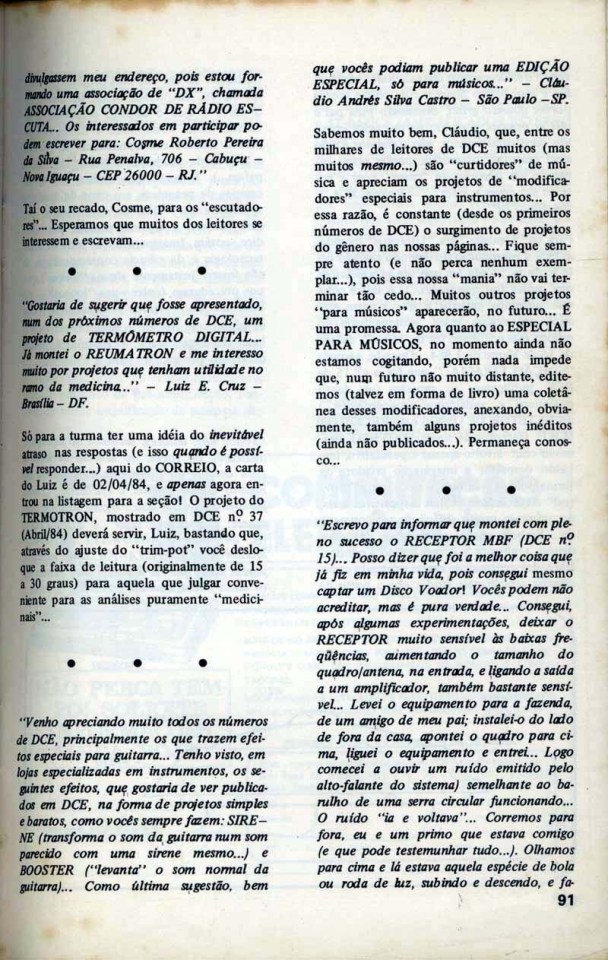
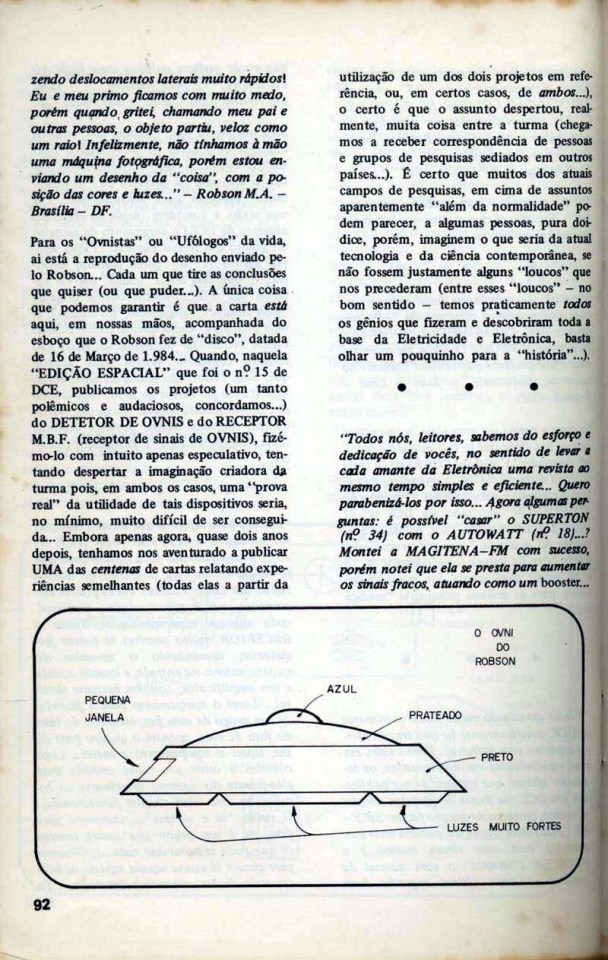
Divirta-se com a Eletrônica, nº 39, junho de 1984. Você pode baixar esta edição aqui.
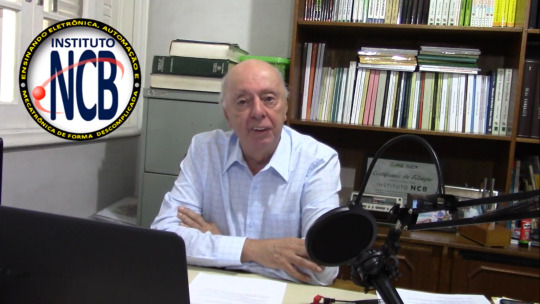
Newton C. Braga no Instituto que leve o seu nome.
O último projeto que lhes trago foi concebido por Newton C. Braga, nascido na capital paulista em 6 de novembro de 1946, e que desde muito cedo iniciou suas atividades no ramo da eletrônica. Com apenas 11 anos, elaborou uma série inédita de projetos de eletrônica que foram posteriormente publicados numa seção da revista Eletrônica Popular, do Rio de Janeiro. Por influência dos pais, mal terminava o curso colegial e já lecionava em escolas preparatórias de vestibulares, tendo sido fundador de uma delas no município de Guarulhos (SP). Ingressou na USP, tendo cursado o Instituto de Física e a Escola Politécnica. Já nessa época de estudante, escrevia artigos técnicos de eletrônica para diversas publicações como a revista Monitor e o jornal A Eletrônica em Foco. Foi professor de eletrônica do Colégio Objetivo e realizou pesquisas no campo da Bioeletrônica na Escola Paulista de Medicina. Publicou diversos artigos no exterior, tendo colaborado com o boletim da Canadian Broadcasting Co. (CBC). Foi convidado em 1976 a participar de uma nova publicação, tornando-se autor de inúmeros projetos e diretor técnico da conceituada Revista Saber Eletrônica (Editora Saber). Nesse posto, criou nos anos 80 a revista Experiências e Brincadeiras com Eletrônica Júnior e colaborou com a revista Rádio e Eletrônica.
O motivo de Braga ter desenvolvido um projeto de detetor de OVNIs deve-se ao fato dele sempre ter sido também um aficionado por ufologia, tanto que nos anos 70 foi redator do boletim da Associação de Pesquisas Exológicas (Apex), fundado e presidido pelo médico Max Berezovsky. No ano 2000, Braga lançou pela editora norte-americana Newnes o monumental livro Electronic Projects from the Next Dimension: Paranormal Experiments for Hobbyists (Electronic Circuit Investigator), em que expõe esquemas de aparelhos capazes de proporcionar experiências no campo paranormal, na mesma linha do célebre engenheiro eletricista e físico sérvio-americano Nikola Tesla (1856-1943), que segundo a lenda teria inventado aparelhos capazes de abrir portais para outras dimensões e contatar espíritos e extraterrestres.

Para começar, dois sensacionais projetos de detetores de OVNIs, um mais específico, em uma mesma edição especial de DCE.Como os editores não tinham o costume de datar as revistas nessa época, não se sabe ao certo quando foi publicada, mas calculo que deva ter sido por volta de junho de 1982.
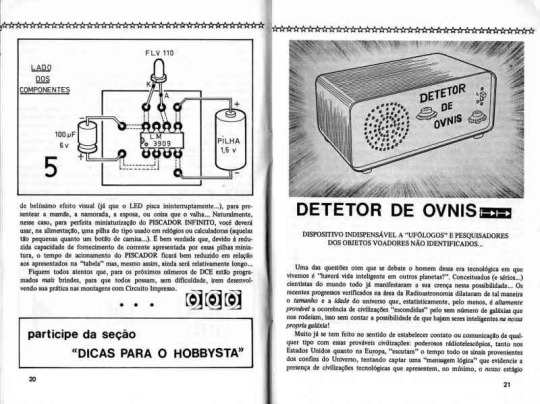
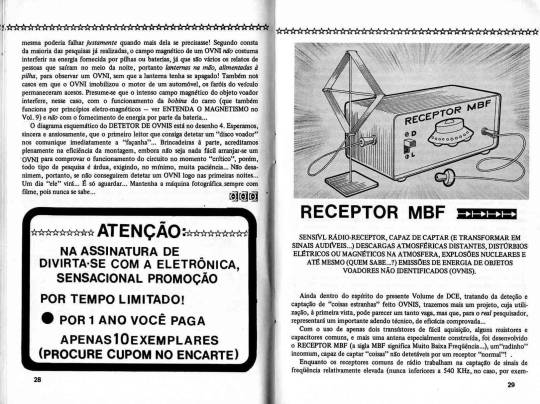
Você pode baixar esta edição aqui.
A seguir, vários projetos de J. Martin publicados em 1997 no especial A Eletrônica descobre os OVNI, da editora Fittipaldi.
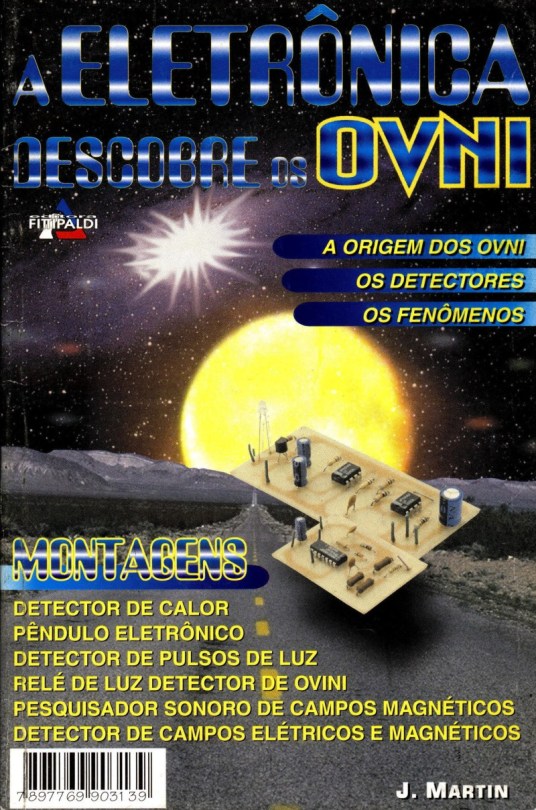
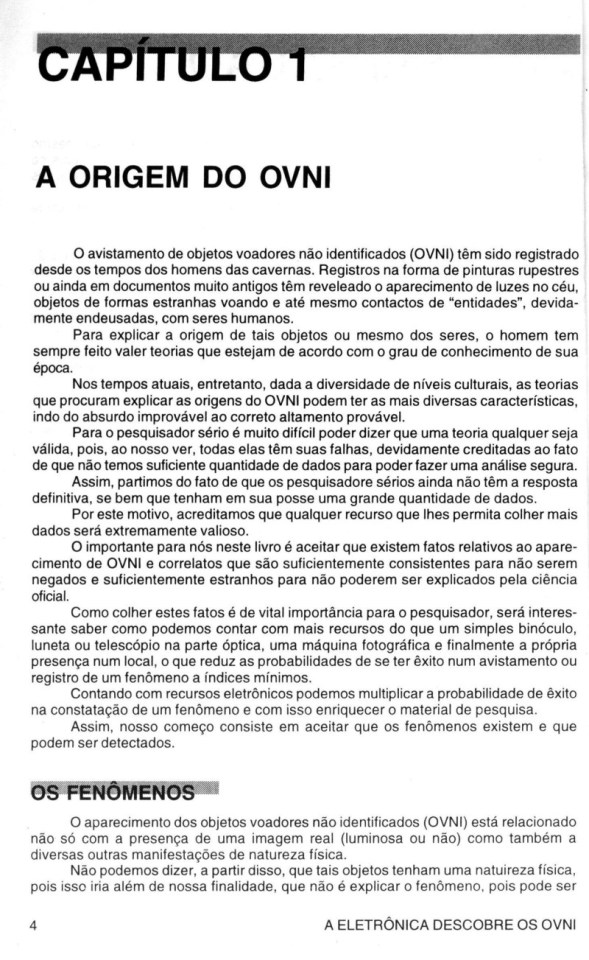
Você pode baixar esta edição aqui.
4 notes
·
View notes
Text
Money Manager Apologizes on Twitter After Brazil Funds Crushed
Funds face trial by fire after years of record-setting inflows

The market chaos is leaving a trail of red in Brazil’s fund industry.
The best-performing money managers are reeling after the nation’s markets were especially hard hit by the global selloff. Some took to social media to try to appease anxious investors, who flocked to riskier products in recent years as Brazil’s benchmark rate hit an all-time low.
One apologized, another discussed his sleeping patterns.
“Unfortunately, we were unable to defend ourselves from this fall like we did in 2015, or in the drawdowns of 2016 or in May 2018 and in other moments,” Joao Braga, co-head of equities at XP Asset Management tweeted on Wednesday. “I apologize and we will work hard to recover.”
The reality check for Brazilian funds comes after years of rapid growth, driven by investors moving from government bonds and into equity and hedge funds. This enticed banking veterans to switch careers and launch investment firms, which multiplied at breakneck pace, even as global counterparts suffered from outflows and closures.
On Thursday, Brazilian stocks tumbled almost 20% in the single worst trading day since the 1992, with back-to-back circuit breakers. The Ibovespa stock index has erased 20 months of gains since late January and is down almost 40% since its peak this year.
Continue reading.
3 notes
·
View notes
Text
The Annapurna Circuit in 14 Days: An Itinerary for Thrill-Seekers
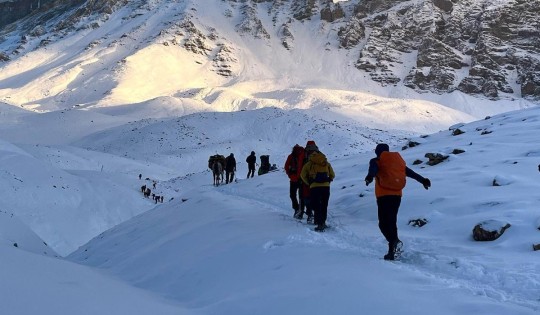
Are you ready to embark on a journey that will push your limits and reward you with some of the most breathtaking views on Earth? The Annapurna Circuit is the ultimate adventure for thrill-seekers, offering a blend of natural beauty, cultural encounters, and physical challenges. In just 14 days, you can experience the essence of the annapurna circuit tour, an expedition that promises to be as rewarding as it is demanding.
Day 1: Arrival in Kathmandu
Your adventure begins in Kathmandu, Nepal's vibrant capital. This city, teeming with history and culture, is your gateway to the Annapurna Circuit. Spend the day exploring UNESCO World Heritage sites like Swayambhunath (Monkey Temple) and Pashupatinath Temple. Prepare for your trek by purchasing any last-minute gear in Thamel, a trekking hub.
Pro Tip: Visit the Garden of Dreams for a peaceful evening before the journey begins.
Day 2: Drive to Besisahar and Trek to Bhulbhule
The Annapurna Circuit tour officially starts with a drive from Kathmandu to Besisahar, a journey of around 6-7 hours. From Besisahar, you’ll begin your trek to Bhulbhule, which is a gentle introduction to the trail that will gradually lead you through lush landscapes and terraced fields.
Elevation: 840m (Besisahar) to 840m (Bhulbhule)
Distance: 8 km | Trekking Time: 2-3 hours
Day 3: Trek to Jagat
The real adventure kicks off on the third day as you trek from Bhulbhule to Jagat. The trail takes you through subtropical forests and alongside the Marsyangdi River. You'll cross suspension bridges, pass by waterfalls, and catch your first glimpses of snow-capped peaks.
Elevation: 1,300m
Distance: 14 km | Trekking Time: 6-7 hours
Day 4: Trek to Dharapani
Leaving Jagat behind, you'll ascend to Dharapani. The trail becomes steeper, and the landscapes more dramatic. You'll traverse rocky paths, dense forests, and picturesque villages, giving you a taste of the diverse terrain that characterizes the Annapurna Circuit.
Elevation: 1,860m
Distance: 15 km | Trekking Time: 6-7 hours
Day 5: Trek to Chame
The trek from Dharapani to Chame offers a mix of nature and culture. As you climb higher, you'll pass through the Tibetan-influenced village of Bagarchhap, where you can visit a Buddhist monastery. The views of Annapurna II and Lamjung Himal will inspire you to keep pushing forward.
Elevation: 2,670m
Distance: 14 km | Trekking Time: 5-6 hours
Looking for complete guidance contact us orangedmc
Day 6: Trek to Upper Pisang
Chame to Upper Pisang is one of the most scenic parts of the Annapurna Circuit tour. The trail winds through pine forests, and you'll start to feel the altitude as you reach Upper Pisang. Here, the landscape changes dramatically, with towering peaks surrounding you.
Elevation: 3,300m
Distance: 16 km | Trekking Time: 5-6 hours
Day 7: Trek to Manang
Today, you’ll trek to the picturesque village of Manang, a popular acclimatization stop. The trail from Upper Pisang to Manang offers two routes: one via the high path through Ghyaru and Ngawal, which offers stunning views but is more challenging, and the other via the lower path along the Marsyangdi River.
Elevation: 3,519m
Distance: 19 km | Trekking Time: 6-7 hours
Day 8: Acclimatization Day in Manang
Acclimatization is crucial as you ascend higher on the Annapurna Circuit tour. Spend the day exploring Manang and its surroundings. You can hike to Gangapurna Lake or the nearby village of Braga, where you'll find a 500-year-old monastery with panoramic views of the Annapurna range.
Elevation: 3,519m
Distance: 3 km | Trekking Time: 2-3 hours (optional hike)
Day 9: Trek to Yak Kharka
After a restful day in Manang, you’ll continue your ascent to Yak Kharka. The trail is less populated but offers stunning views of the surrounding peaks. Watch for yaks grazing in the pastures as you trek through this serene landscape.
Elevation: 4,050m
Distance: 10 km | Trekking Time: 5-6 hours
Day 10: Trek to Thorong Phedi
As you approach one of the highest points on the Annapurna Circuit tour, the trek to Thorong Phedi is steadily climbing. The terrain becomes more rugged, and the air thinner. Thorong Phedi is the base camp for the next day's pass crossing.
Elevation: 4,450m
Distance: 7 km | Trekking Time: 4-5 hours
Day 11: Cross Thorong La Pass and Trek to Muktinath
The highlight of the Annapurna Circuit tour is the crossing of the Thorong La Pass, standing at an elevation of 5,416 meters. This day is challenging, but the rewards are immense. You'll be greeted with 360-degree views of the Annapurna and Dhaulagiri ranges. After crossing the pass, you'll descend to Muktinath, a sacred pilgrimage site for Hindus and Buddhists.
Elevation: 5,416m (Thorong La) to 3,800m (Muktinath)
Distance: 16 km | Trekking Time: 7-9 hours
Day 12: Trek to Jomsom via Kagbeni
From Muktinath, the trail descends to the Kali Gandaki Valley, passing through the ancient village of Kagbeni. This region has a unique desert-like landscape, and the trek to Jomsom is relatively easy, offering a chance to relax after the previous days' exertions.
Elevation: 2,720m
Distance: 20 km | Trekking Time: 6-7 hours
Day 13: Fly to Pokhara
After days of trekking, you’ll take a short flight from Jomsom to Pokhara, a beautiful lakeside city. This is your chance to unwind, shower, and enjoy a celebratory meal. Spend the day exploring Pokhara’s attractions like Phewa Lake and the World Peace Pagoda, or simply relaxing with a view of the mountains.
Elevation: 800m
Flight Time: 20-25 minutes
Day 14: Return to Kathmandu
Your Annapurna Circuit tour concludes with a return to Kathmandu. Reflect on the incredible journey you’ve just completed. Whether you explore more of Nepal or head home, the memories of the Annapurna Circuit will stay with you forever.
Drive Time: 6-7 hours
Final Thoughts
The Annapurna Circuit in 14 days is not just a trek but a life-changing experience combining adventure, culture, and natural beauty. This itinerary offers a balanced mix of challenge and enjoyment, making it perfect for thrill-seekers who want to explore one of the world's most renowned trekking routes and annapurana trek tour. Whether it's your first trek or you're a seasoned hiker, the Annapurna Circuit tour will leave you with memories that last a lifetime.
0 notes
Text
KUCI Milk Tea House Playlist 05-19-2020
Edyth - Noid Ride - Dred Collective Volume 5 Yaeji - What We Drew - What We Drew
sad p.m. - I Need U - N/A Msymlakos - Gunshot - Dread Collective Volume 5 Felix Kubin - Phonobashing(a19v) - Jetlag Disko
Braga Circuit - Without Ya - N/A n l n a l a n - Walking On Moon Beams - For A Little Cruise Frenzy - Icarus - Nein Songs Oorineun Sokotdo Senggyutgo Yujado Neurutdanae - Bluemoon - N/A
Run with Hounds - Coming Down with a Curse - Coming Down With A Curse Sun Araw - Deep Cover - On Patrol Isabella - Funambulist - N/A
Petrolz - Insider - Capture 419 Sister's Barbershop - Most Ordinary Existence - Most Ordinary Existence
Harunemuri - 春と修羅(Haru and Shuura) - Haru and Shuura Civic Center - Fly on the wall - The Ground Below Animal Collective - Leaf House - Sung Tongs
Lead - Concessions of Being - S/T serpentwithfeet - A Comma - Apparition Huun Huur Tu - Blessing - Altai Sayan Tandy-Uula
Underwears Band - Downpour - Cruise ship of love Swirling Light - Findyourself - World full of Noise EP Byul.org - I am What I hate - Bean Tales and Trash Dance
1 note
·
View note
Text
"Annapurna Circuit trek" A Journey Of Lifetime

The Annapurna Circuit trek is one of the most preferred timeless and also spectacular traveling trails of the world. Starting at about 800 meters from subtropical mid-hills and also eco-friendly valleys, it offers us a possibility to explore the Mountain ranges from many different angles and viewpoints. The Annapurna massif is maybe one of the most impressive as well as an amazing range of mountains in the Himalayas and walking this chain of mountains is simply stunning. It is well known among the hiking lovers that the Annapurna Circuit trek is among one of the most very regarded trekking holidays worldwide circumnavigating worlds 10th highest mountain, the Annapurna I (8091 m) as well as a number of various other significant peaks of Annapurna massif that provides most fantastic Himalayan vistas. From a plain elevation of 800 meters to the high altitude of 5416 meters, you will pass through a diverse geographical and also socio-cultural variant with a fantastic range of vegetation and animals that flourish within the range.
The 10 to 21 days Annapurna circuit trek can be started from Besisahar/ Bhulbhule or Chyamje after around 6 to 10 hours of drive from Kathmandu. Then we follow the Marsyangdi River in the direction of north via quite Nepali towns, stunning valleys, farmlands and also lavish forests. As we climb up greater we not only notice the plant life change however also see the change in lifestyles, practice, culture as well as costume of the regional individuals. The preliminary days of the Annapurna Circuit trek entail going through friendly villages, rice fields, and forests as well as in the lower realms of the Annapurna Sanctuary area. The expedition continues travelling through dozens of flatlands and also high hill villages and several of the most stunning natural scenery on the planet. Just visualize the delights of crossing the renowned high pass, the Thorong La (5416 m/17764 feet) heading from Manang to Muktinath with Annapurna I, world's tenth highest mountain rising to 8091 m to the eastern and also Dhaulagiri, world's 7th greatest mountain towering 8167 m to the west accompanied by numerous bordering mountain peaks.
Further down the pass, on the windy Kali Gandaki valley, we go along Holy pilgrimage site of Muktinath in a quiet poplar grove. Muktinath is a complex of 4 main holy temples sacred to both Hindus and also Buddhists. At the courtyard of the holy temples are 108 waterspouts, pilgrims believe to wash rid of all their transgressions and also get spiritual quality upon showering in each of them. The strange gas fires below the altar of Jwala Mai temple impresses the visitors. Hiking in advance from Muktinath passing through the windy Kali Gandaki valley to Jomsom as well as the apple orchards of Marpha, go into the deepest gorge on the planet, and also prior to ending our Annapurna Circuit trek in the foothills, we stop en route in the warm spring of Tatopani to swim in and relieve our fatigued feet and after that to Ghorepani to enjoy sunup over the hills from the view tower of Poon Hill (3210 m/10529 ft). Circling back to Pokhara, we additionally discover a lot more spectacular natural landscapes and culturally abundant ethnic towns.
Journey Highlight
• Sightseeing tour of UNESCO World Heritage Sites in Kathmandu valley
• Interesting as well as scenic drive to Besisahar
• Hiking through beautiful hilly villages of different ethnic background and also going to intriguing temples and also age-old Monasteries
• Impressive hiking experience through varied landscape and also over a high pass at 5416m/17765ft
• Breath-taking sights of high Himalayan peaks
• Early morning trek to the well-known sight tower of Poon Hill for awesome sunrise as well as outstanding sights of Dhaulagiri and also Annapurna Variety
Detailed 22 days Annapurna Circuit Trek
Day 01: Arrive in Kathmandu.
Upon your arrival in Kathmandu, pickup from flight terminal as well as transfer to the Hotel.
Day 02: Kathmandu Sightseeing.
Kathmandu Full Day sightseeing and tour, Visit: Kathmandu Durbar Square, PashupatiNath Temple, and BoudhaNath Stupa.
Day 03: Drive Kathmandu- Besi Sahar (823m).
After having Morning meal prepare to drive to Besi Sahar on the way check outManakamana Devi temple by cable car. Supper and overnight in Guest House.
Day 04: Trekking Besi Sahar - Bahundanda (1311m).
Hiking beginnings via level as well as terraced rice field, slowly gaining elevation, have excellent views of Baudha (6672 m.) and also HimalChuli (7893 m.) When the path tightens and the valley comes to be a deep river gorge. We cross a lengthy dangling suspension bridge and also get in the large trading town of Khudi. The route proceeds northwards up the valley, crossing a number of suspension bridges and passing a number of stunning falls. Have a close view of Lamjung (8986 m.) The town BahunDanda supports the last shops of any type of dimension prior to Jomsom.
Day 05: Trekking Bahundanda - Chamje (1390m).
We descend to the Marsyangdi to access the river level before choosing our path. If the water is reduced we cross on a makeshift bridge to the eastern bank, otherwise we proceed to the western bank climbing high over a ridge, to a rejoin the eastern bank route over the suspension bridge at Sange. We after that climb up high once again, through rhododendron and a pine forest. The valley is now an extremely deep and steep gorge.
Day 06: Hiking Chamje - Bagarchap (2103m).
We climb steadily all Day to Tal, a tiny town at the foot of a big fall. We are currently getting in the Manang area. After leaving Tal we cross a big bridge to the town of Dharapani (1860 ft.) where our walking permits are inspected and we delight in a cup of tea. We then climb up through woodlands to Bagarchhap, the first town on the trek with Common Tibetan design. (Appx - 6 hours).
Day 07: Hiking Bagarchap - Chame (2615m).
The path follows west. Manasalu forming a fantastic backdrop and also Annapurna II (7937 m.) appearing sometimes to the south. We proceed through the fine forest of Yearn and also fir, taking a break at the hamlets of Charku, Thangje, and Kaparkodo. As we continue on to Chame, sights of the Annapurna enhance considerably. (Appx. - 6 hrs).
Day 08: Hiking Chame - Pisang (3133m).
We constantly cross the river throughout the day, going through the narrow as well as high canyon. Nearing the town of Pisang we cover a ridge to get our very first views of the Manang Valley, a large u formed valley hanging between two lines of snowy mountains. (Appx. - 6 hrs).
Day 09: Trekking Pisang- Manang (3500m).
Coming down to the forested valley we follow the route via the level valley, passing a small STOL airstrip, go across the river once again to Braga. This is a village of over 200 residences. (Appx. - 5 hours). We will go check out Braga Monastery. The largest in the district, it has an exceptional display screen of statues, tangkas and also manuscripts. From here it is just a brief walk to Manang. (Appx. - 2 hours).
Day 10: Manang (3500m).
Acclimatization day and also explore Manang. The town, of over 1000 flat-roofed houses, is picturesquely set among some spectacular landscapes: Annapurna II, Annapurna III (7555 m.), Annapurna (7454 m.) to the South; Tilicho (7132 m.) as well as the Grand Barrier to the west Chulu West (6583 m.) and also Chulu East (6059 m.) to the north. Relax as well as Acclimatize.
Day 11: Trekking Manang - Latdar (4176m).
Continue walk to the MarsyangdiKhola continuously climbing into rather alpine locations. Keep your eyes open for Thar, Ghoral, and mountain lamb. Lunch at ChauinKharka, after lunch stroll 2 hrs to Yak Kharka/ChuriLettar. Supper and overnight at tented camp.
Day 12: Hiking Latdar - ThorungPhedi (4404m).
After morning meal at 8 AM. Stroll 2 hours to the tiny bridge then ascend 2 and a half hrs reaching Thorangla Base Camp. Lunch, dinner, and stay at ThoranglaPhedi.
Day 13: Hiking ThorungPhedi - Thorung La (5416m) - Muktinath (3802m).
Via the crossing of the Thorangla pass 5415 m.) is not practically challenging yet take it gradually considering the problem of altitude and also possible snow. After trekking four hrs we reach to the altitude (5415 m.) (stunning high Himalaya views). The whole Annapurna Himal to the west and the incredibility deep Kali Gandaki valley: as well as the peaks to Thorugtse (6482 m.) and also Chulu to the north. The descent is high and also harsh, but we quickly have exceptional views of Dhaulagiri (8167 m.) (Appx. - 7 hrs).
Day 14: Trekking Muktinath - Jomsom (2713m).
After the efforts of the crossing, a day of rest remains in order. Muktinath is a vital pilgrimage place for both Hindu and Buddhists - Buddhist Gompa and a pagoda design holy temples are the main beauty here. The most fascinating facet of the location is the spot where shedding natural gas issues from the rock. (Day Of Rest).
Day 15: Trekking Jomsom - Kalopani (2530m).
Day 16: Trekking Kalopani - Tatopani (1190m).
Day 17: Trekking Tatopani - Ghorepani (2819m).
Day 18: Trekking Ghorepani - Tadapani - Ghandrung (2012m).
Day 19: Trekking Ghandrung - Nayapul drive to Pokhara.
Day 21: Pokhara- Kathmandu.
Day 22: Departure
For more information about this subject and on travel in Nepal, please visit Nepal Trekking Routes [ https://www.nepaltrekkingroutes.com ] . There you will be able to browse different trekking packages and plan your Nepal trip. Find photos, videos and tips on travel in Nepal, trekking, rafting, flights, outdoor activities & read other articles on the subject.
2 notes
·
View notes
Text
Highs and Lows
It’s our day 13 on the Annapurna Circuit and we are currently sat in the glorious sunshine in our lodgings ‘Alpine Homes’, which consists of 10 beach hut rooms built around a glorious sun trap sheltered courtyard. It’s kind of Bridlington Sea Front meets the Himalayas, and it is making us feel very at home!
The past 4 days have been a series of altitude and emotional ups and downs, and we are now resting in relative Nepal luxury in Manang to recover from both.
The ridiculous views and a Puffin related near disaster
After Upper Pisang we left to climb from 3300m to 3670m to our tea house for the evening. The initial climb was absolutely brutal up a series of switchbacks on crumbly slippery steep path. There were a lot of people snaking up the hillside, and we made many temporary Annapurna friends as we rested with them and remarked on the climb through gasped breaths.

After climbing up the hill, we were rewarded with the most ridiculous panoramas of Annapurna II, IV and V, in addition to Pisang Peak and Gangapurna. We really felt in the middle of the Himalayas now! We had tea with a lovely Nepalese woman who recommended her sisters guesthouse in the next village, and told us about her brother who had a shop in London selling Nepalese clothes and trinkets!
On the way to the next village,
trying to get a good Spiker the Puffin photo posing at a view point, we had a near disaster. I carelessly knocked him from his precarious perch and watched in horror as he fell off the side of the cliff and rolled down a series of ledges in slow motion. His whole life flashed before my eyes as I accepted his loss to the mountain, until he finally came to rest on an icy outcrop, the last resting place before a fall down a perilous cliffside! Without hesitation, Liam leapt to his rescue, and scooped him up! He survived and we joked he must be the One Chosen Puffin.

We finally arrived at our guest house and collapsed into the glorious room, with panoramic mountain views on two sides, utterly content. Life couldn’t get any better, we spent the evening chatting with fellow teahouse guests, eating delicious food and gazing at the scenery.
To crown the whole experience off, the night sky was brilliant with stars and we were treated to a spectacular phenomenon. Over in the next valley there was an enormous thunderstorm (we couldn’t see or hear it) and every time lightening struck, the mountain range visible from our window glowed reds and pinks. It was probably the most beautiful thing I’ve ever seen- but sadly it was this same beauty that was causing the deaths of people in Southern Nepal as their homes were battered by the same storm.
Life feels very precious and precarious in the mountains, and not just for Spiker! Towered over by the colossal giants of the Himalayas, you feel very vulnerable to the weather. Unlike safely maintained European trails, often Nepali trails can succumb to landslips, avalanches, or the trail just crumbling into the ravine below. You have to be constantly assessing the risks and take nothing for granted, especially the weather. Storms above 3000m are no picnic!

We followed a Guide and got lost!
That evening, in the guest house, we made friends with a German woman called Gabriela and her guide, whose name I shamefully can’t pronounce or spell! We decided to walk with them the next day, and it culminated in our only time getting remotely lost. As it turned out, we couldn’t keep up with the duo, and also they took a route off the main track. This route had some hair raising descents and I’ve learnt something about myself this trip - I’m terrified of very steep descents! I start panicking very easily and can’t do it! So, Liam and I went our separate ways after an hour, but found ourselves lost on the hillside in a myriad of goat tracks, Jeep tracks and pine forest.

Morale sank a little, as Liam was feeling really exhausted and I was annoyed with myself for succumbing to my fear of steep descents. It turns out that even the most stunning mountain scenery in the world cannot immunise you from moments of misery.
We slowly and silently made our way to the next village Braka (pronounced Braga) and collapsed in the room! We’d finally made it to the middle of the trail, a huge achievement and something we’ve been looking forward to. However, we were not feeling very celebratory.
Injury strikes.
So it turns out that Liam is now injured. Ever since our (not so) jolly up to the Pisang viewpoint, his Achilles’ tendon has been niggling him, and it got to a low point on Day 11. Even though the pain is not very bad, it is quite concerning because of the brutality of the Himalayan terrain. There aren’t any gentle flat walks, and out packs are heavy and strain our bodies. As a result, we’ve decided to take some rest days to give the tendon the best chance of recovery.
Liam has been using the unmelted ice from the paths to make ice packs and regularly plunging his foot into buckets of ice cold water. This is no easy task considering that the first night we arrived in Braka it was snowing, and ever since then it’s barely got above zero.

Something I knew about myself, an unattractive quality, is also coming out. I get quite miserable when I can’t do anything. I have been trying to remain upbeat, especially as Liam is the one who is suffering the most, but I’ve been feeling pretty downhearted about resting as we are both really eager to explore the amazing mountains and push on with the walk. This terrain is also quite difficult to relax in- it’s roasting in the sun but freezing in the shade, the rooms are freezing at night, good hygiene is difficult to maintain, and the altitude also affects you.
However, we’ve worked it out between us and are now very content. We moved from Braka, where there was nothing to do but hike, to Manang (30 mins away), where the are lots of shops, bars, little walks and even three cinemas (projector screens) showing loads of our favourite mountain movies such as Everest and Into Thin Air.
We’ve also treated ourselves to a beer, laundering all of our clothes and a really hot shower. We’ve even washed Spiker! After a difficult day of low spirits, we feel very good now relaxing in our lovely new lodge in the sun.

What’s next?
Liam and I are planning to remain in Manang for at least three days. It is really stunning here, and we will be very comfy. We will see how his ankle heals, and then decide if we want to carry on. From this place begins the hardest, coldest and most remote trekking, so we need to be fit to attempt it. However, even if Liam doesn’t heal, we can still go a bit further and do a few smaller walks without bags. We may even hire a porter to help with the bags if it means we can continue on the next hardest part.

A positive of the injury- it’s absolutely gorgeous weather now for a week, and every day that passes means more snow has melted on Thorong La Pass. Every passing day means more people walk the trail and create a better path through the snow. Ultimately, it makes our walk onwards easier!
And I am learning to rest and be still... and Spiker is clean. We’ve made it half way on the Annapurna Circuit!
4 notes
·
View notes